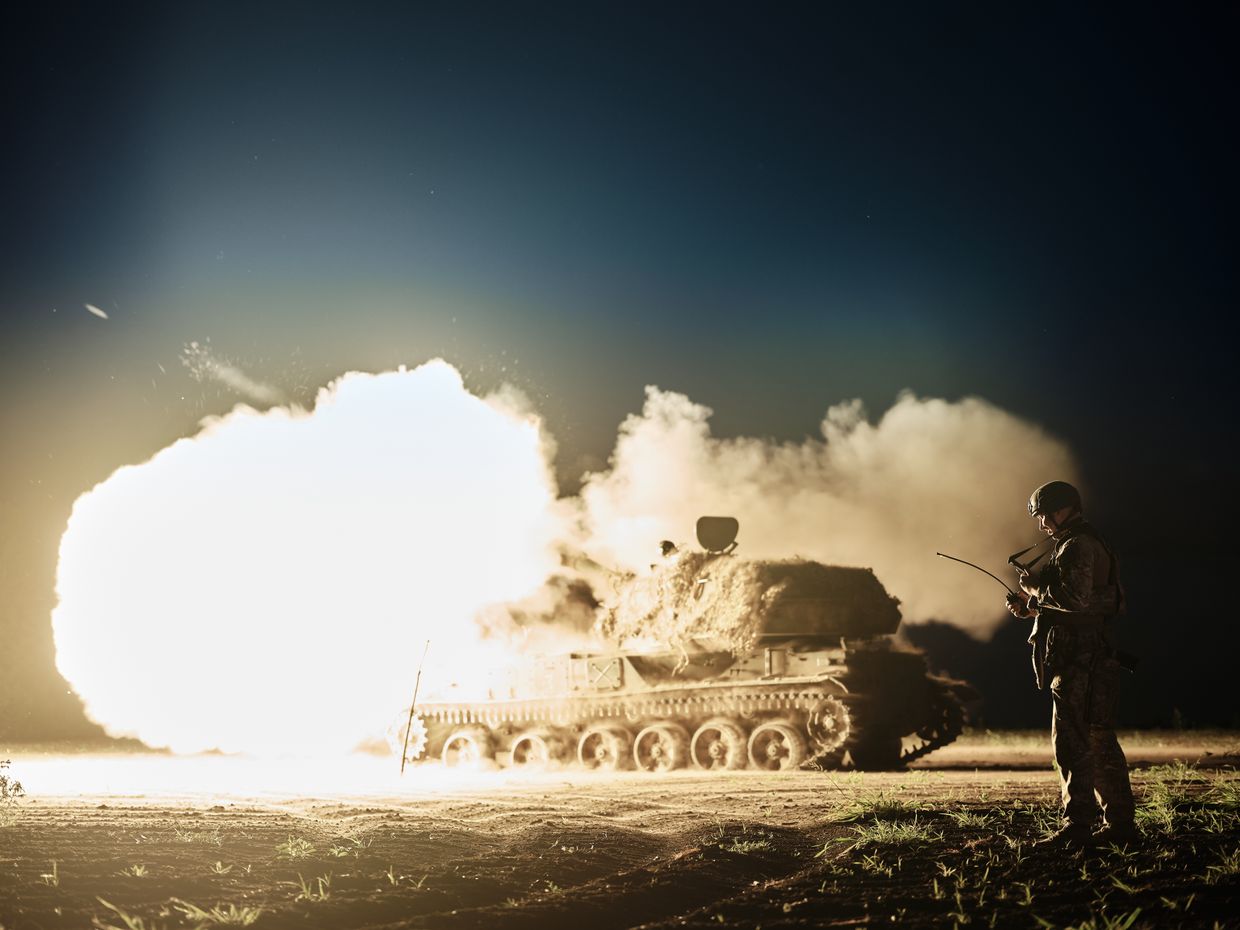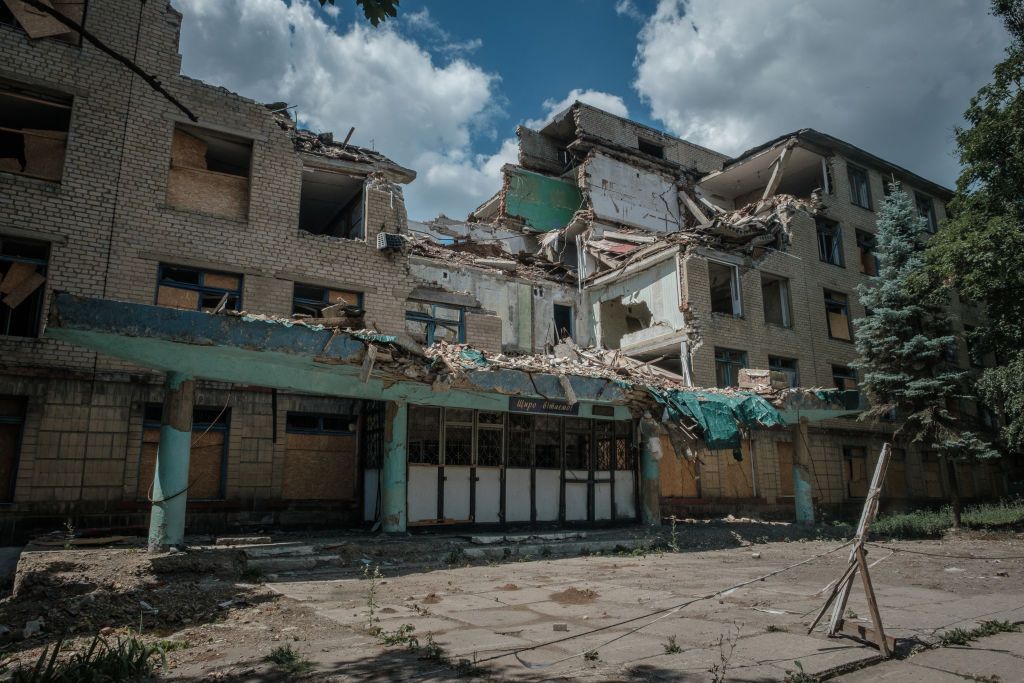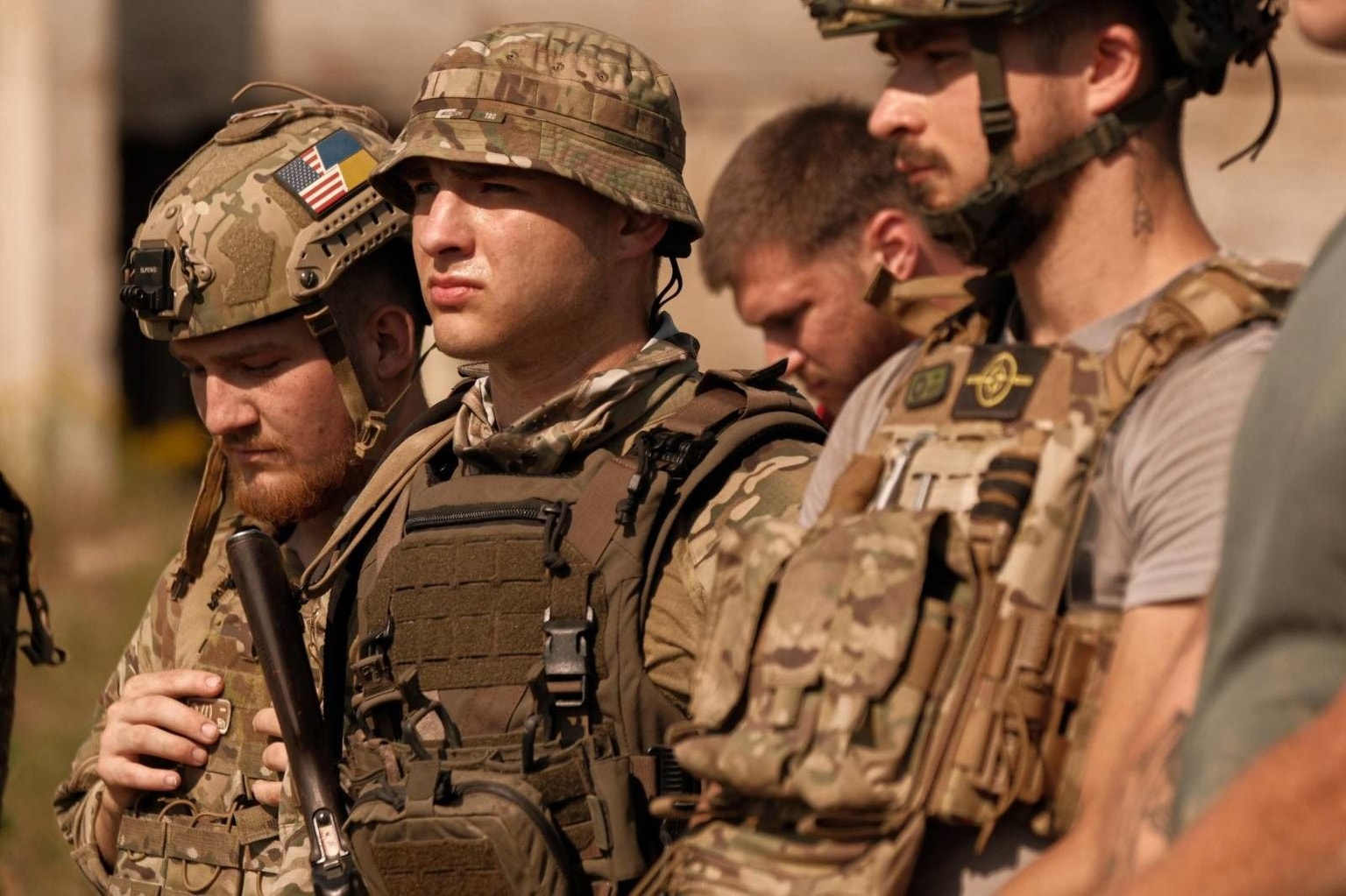
Ukraine's 'buffer zone' in Kursk Oblast – here's what you need to know
A Ukrainian soldier stands by the monument to Vladimir Lenin outside the District Center of Folk Art damaged by hostilities, Sudzha, Kursk Oblast, Russia. (Kirill Chubotin / Ukrinform/Future Publishing via Getty Images)
Ukraine aims to establish a buffer zone in Russia's Kursk Oblast, President Volodymyr Zelensky said on Aug. 18, as he outlined some of the strategic aims of the ongoing operation.
"It is now our primary task in defensive operations overall to destroy as much Russian war potential as possible and conduct maximum counteroffensive actions," he said during his daily address.
"This includes creating a buffer zone on the aggressor’s territory – our operation in the Kursk Oblast."
What is a buffer zone?
In a military sense, a buffer zone is traditionally an area of land established between two opposing forces with the aim of reducing the chances of armed confrontation.
They're often demilitarized and sometimes monitored by neutral international forces such as U.N. peacekeepers. One such example is the U.N.-controlled buffer zone in Cyprus which has divided Greek and Turkish Cypriots on the island since 1974.
Another more infamous example is the Korean Demilitarized Zone (KDZ) separating North Korea from South Korea since 1953, one of the most heavily guarded and mined pieces of land on the planet.

But any buffer zone in Kursk Oblast will likely look very different – there's little chance of a third party such as the U.N. being drawn in to separate the Ukrainian and Russian armies, and the long-term situation on the Korean peninsula requires both sides to be relatively happy with where the border lies.
And with no sign of Ukraine pulling out of Kursk Oblast, agreeing to a new border zone inside Russian territory and not trying to regain the territory lost to Kyiv's forces is an absolute non-starter for the Kremlin.
Zelensky's words should be interpreted as Ukraine's supposed aim to create a strategic shifting of the front line, rather than a buffer zone in the traditional sense.
"It’s basically creating a situation for the Ukrainians to force the Russians to attack at a disadvantage on Russian territory," Phillips P. O'Brien, professor of Strategic Studies at the University of St Andrews in Scotland, tells the Kyiv Independent.
Where will the buffer zone be?
Right now it's impossible to say exactly where the buffer zone will be as that depends on where Ukraine's forces advance to, and those Russian troops have the power to push Ukrainian forces out of Russia.
Kyiv claims to have seized 1,150 square kilometers of Russian territory and 82 settlements, including the town of Sudzha.
What is clear are the steps Ukraine is taking to ensure Russia has as much difficulty as possible when it tries to counterattack, with reports on Aug. 19 claiming a third bridge over the Seim River had been damaged.
If confirmed, this would be a successful strike against the last stationary bridge over the river in the Glushkovsky district, which lies at the border of Ukraine's Sumy Oblast, cutting a substantial part of Russian-controlled Kursk Oblast from the rest of Russia.
"The buffer zone is a strategically really smart idea," O'Brien says. "You set up a strong defensive position on the Russian side of the border, making use of the geography to make it as difficult to attack as possible, thus the destruction of the bridges over the Seim River."

O'Brien points out that Russia has already lost the railroad through the now Ukrainian-controlled town of Sudzha, meaning Russia's forces can only move by road which "makes them vulnerable."
"Plus, the Russian army is slow and ponderous, doesn’t coordinate actions well, and is feeding in forces unevenly," he adds.
The incursion into Kursk should also stop some Russian cross-border strikes and relieve some pressure from civilians living in Ukraine's neighboring Sumy Oblast.
"I would like to remind you that since the beginning of this summer, Ukraine's Sumy Oblast has been targeted with over 2,000 strikes using multiple launch rocket systems, mortars, drones, 255 guided bombs, and more than a hundred missiles, launched from Kursk Oblast," Foreign Ministry spokesperson Heorhii Tykhyi, said on Aug 13.
It's worth noting that Russia tried – and failed – to do something similar earlier this year.
Putin claimed on May 17 that the Kremlin's now stalled advance into Kharkiv Oblast was to create a buffer zone to prevent Ukrainian attacks in Russia's Belgorod Oblast.
In the first half of May, Russia opened a new front in the north. The two-pronged offensive on Kharkiv Oblast unfolded on the back of some of the most difficult months for Ukrainian forces.
But just two weeks after it started, Russia’s move on Ukraine’s second-largest city stopped moving, meeting fierce resistance from a number of hardened Ukrainian brigades and specialist units sent there from the eastern and southern fronts.
What are the wider implications for the war?
Ukraine's incursion undeniably dealt a huge blow to Russian President Vladimir Putin.
"The Ukrainian incursion has again shown how hollow Russia is, mainly due to Putin’s misrule," John Foreman CBE, the U.K.'s former defense attache in Moscow from 2019 to 2022, tells the Kyiv Independent.
Foreman says Putin's image as the "safeguard of Russia" as well as his whole rationale for the full-scale invasion of Ukraine have severely tarnished his reputation.
"But it is a stretch to see this episode shifting the foundations of his rule," he adds. "He remains personally popular, the elites are still behind him, and there aren't any obvious successors."
But just like knowing where the buffer zone will end up, it's impossible to say with any certainty right now how it will affect the wider war.
During an interview on CBS' Face the Nation on Aug. 18, U.S. Senator Mark Kelly said that Ukraine's incursion into Kursk Oblast could help Ukraine change the course of the war in the country's favor.
Yet with Russia's forces still grinding away in Donetsk Oblast, and the city of Pokrovsk coming under increasing threat, it's too early to say if the gamble of effectively opening a new front in the war with Ukraine's already stretched resources has paid off.












